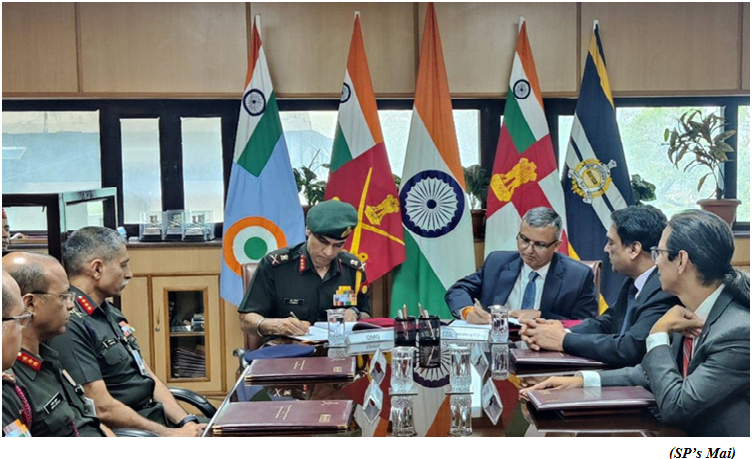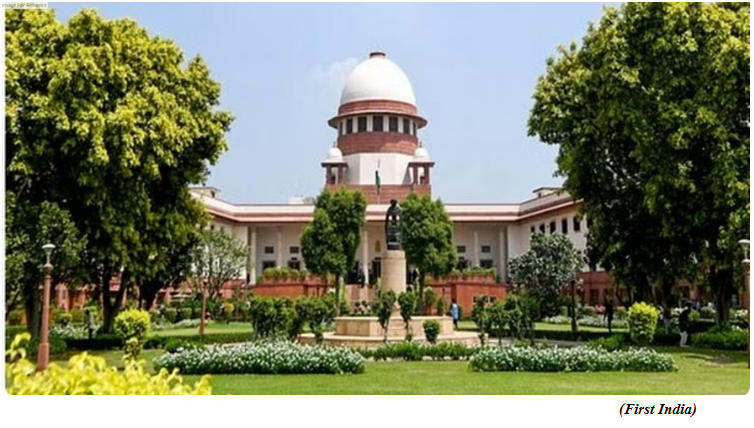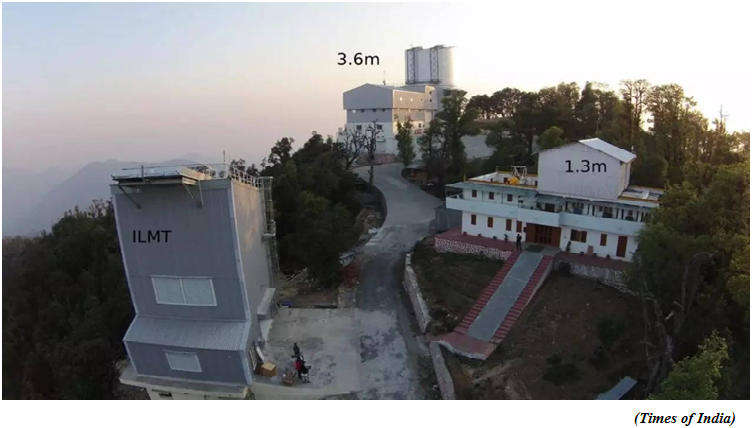Indian Army promoting the National Green Hydrogen Mission (GS Paper 3, Environment)

Why in news?
- In line with the ‘National Green Hydrogen Mission’, the Indian Army has put in motion the process for installation of a Green Hydrogen based Micro Grid Power Plant project in the forward areas along the Northern borders which are not connected by National / State Grid.
- An MoU was accordingly signed between Indian Army and National Thermal Power Corporation Renewable Energy Limited (NTPC REL).
Key Highlights:
- Indian Army is providing requisite land on lease for 25 years with a commitment to purchase generated power through a Power Purchase Agreement (PPA).
- The proposed projects will be installed by NTPC on Build, Own and Operate (BOO) Models at a jointly identified location in Eastern Ladakh.
- The project entails setting up a Solar Power Plant for hydrolysis of water to produce Hydrogen, which, during non-solar hours will provide power through fuel cells.
- This will set the stage for similar projects in the future and contribute towards reducing dependence on fossil fuel-based generator sets with concomitant abatement of green-house gas emissions.
Way Forward:
- With this MoU, the Indian Army has become the first government organisation to enter into an agreement with National Thermal Power Corporation Renewable Energy Limited with firm plans to roll out similar projects in the future.
SC Bench seeks data on alternatives to hanging
(GS Paper 2, Judiciary)
Why in news?
- Recently, the Supreme Court asked the Centre to provide data that may point to a more dignified, less painful and socially acceptable method of executing prisoners other than death by hanging.

Details:
- A Bench of Chief Justice D.Y. Chandrachud and Justice P.S. Narasimha even mooted the setting up of an expert committee to relook India’s method of putting to death its criminals.
- The Chief Justice said such a committee would have experts from the national law universities, professors of law, doctors and scientific persons.
- The court indicated to the Centre, that it needed some underlying data based on which it could examine if there was a more “humane” method of execution, which would render death by hanging unconstitutional.
- The Bench explained that it also needed to know what strides the fields of science and technology have made in suggesting “any other method of execution consistent with human dignity”.
Petition before SC:
- The court was hearing a petition filed by advocate Rishi Malhotra challenging the constitutionality of death by hanging as a mode of execution.
- Section 354 (5) of the Code of Criminal Procedure mandates that a person sentenced to death shall “be hanged by the neck till he is dead”.
- He said there is a need to evolve a “humane, quick and decent alternative”. He termed hanging as “cruel and barbarous” compared to lethal injection, as used in the United States.
Background:
- In 2018, the Centre filed an affidavit supporting death by hanging. It had not found the method of execution “barbaric, inhuman and cruel” compared to firing squads and lethal injections.
- The government had traced statistics of “botched-up” administration of lethal injections to condemned prisoners in the United States for 110 years to prove its point that this mode of State execution was only “designed to create an appearance of serenity and painless death”.
- Likewise, the government had graphically detailed the horrors of death by firing squad. How, if the shots missed the heart, the prisoners slowly bled to death.
- The Centre had also said the mode of execution is a “matter of legislative policy”.
- The government said the death penalty is awarded only in the rarest of rare cases. The court had earlier clarified that it was not questioning the constitutionality of the death penalty.
Asia’s largest 4-metre International Liquid Mirror Telescope at Devasthal in Uttarakhand
(GS Paper 3, Science and Tech)
Why in news?
- Recently, Union Minister of Science & Technology inaugurated Asia’s largest 4-metre International Liquid Mirror Telescope at Devasthal in Uttarakhand.

Details:
- Aryabhatta Research Institute of Observational Sciences (ARIES) announced that the world-class 4-metre International Liquid Mirror Telescope (ILMT) is now ready to explore the deep celestial sky. It achieved its first light in the 2nd week of May 2022.
- The telescope is located at an altitude of 2450 metre at the Devasthal Observatory campus of ARIES.
Stakeholders:
- The ILMT collaboration includes researchers from ARIES in India, the University of Liège and the Royal Observatory of Belgium in Belgium, Poznan Observatory in Poland, the Ulugh Beg Astronomical Institute of the Uzbek Academy of Sciences and National University of Uzbekistan in Uzbekistan, the University of British Columbia, Laval University, the University of Montreal, the University of Toronto, York University and the University of Victoria in Canada.
- The telescope was designed and built by the Advanced Mechanical and Optical Systems (AMOS) Corporation and the Centre Spatial de Liège in Belgium.
Components:
There are primarily three components in a liquid mirror telescope:
- A bowl containing a reflecting liquid metal (essentially mercury),
- An air bearing (or motor) on which the liquid mirror sits, and
- A drive system.
- Liquid mirror telescopes take advantage of the fact that the surface of a rotating liquid naturally takes on a parabolic shape, which is ideal for focusing light.
- A scientific grade thin transparent film of mylar protects the mercury from wind. The reflected light passes through a sophisticated multi-lens optical corrector that produces sharp images over a wide field of view.
- A 4k ⨯ 4k CCD camera, located above the mirror at the focus, records 22 arcminute wide strips of the sky.
How it works?
- The ILMT employs a 4-metre-diameter rotating mirror made up of a thin layer of liquid mercury, to collect and focus light. The metal mercury is in liquid form at room temperature and at the same time highly reflective and hence, it is ideally suited to form such a mirror.
- The ILMT is designed to survey the strip of the sky passing overhead each night, allowing it to detect transient or variable celestial objects such as supernovae, gravitational lenses, space debris, and asteroids.
- ILMT is the first liquid mirror telescope designed exclusively for astronomical observations and this is the largest aperture telescope available in the country at present and is also the first optical survey telescope in India.
Data collection:
- While scanning the strip of the sky every night, the telescope will generate nearly 10-15 Gigabytes of data and the wealth of ILMT generated data will permit the application of Big Data and Artificial Intelligence/Machine Learning (AI/ML) algorithms that will be implemented for classifying the objects observed with the ILMT.
- The data will be analyzed quickly to discover and discern variable and transient stellar sources. The 3.6 metre DOT, with the availability of sophisticated back-end instruments, will allow rapid follow-up observations of the newly-detected transient sources with the adjacent ILMT.
- The data collected from the ILMT, over an operational time of 5 years, will be ideally suited to perform a deep photometric and astrometric variability survey.




